Local News
“Dear Jack Dear Louise” funny and poignant
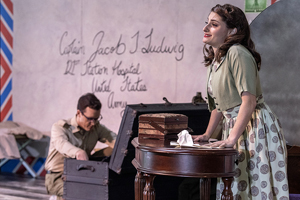
Review by BERNIE BELLAN When I learned that the Winnipeg Jewish Theatre was going to be producing its first production in front of a live audience since February 2020, I wondered how it might come off, given that performing under a canopy on a field isn’t quite the same as say, putting on a show at Rainbow Stage.
But, to say that WJT Artistic Director Ari Weinbeg, along with his production crew, has pulled off a major success, would be an understatement. The choice of “Dear Jack Dear Louise” turned out to be a perfect one given the setting of the play. Sitting under a canopy while hearing one of the actors describe, at times, what it’s like having to treat wounded soldiers in field hospitals set up in tents during World War II could not have been more evocative.
But, lest you think this play is about the war, let me assure you that, while the war plays a pivotal role in the storyline, this is really a story about how two individuals developed a serious romance through letter writing – a lost art if ever there was one.
The two characters in the play, Jack Ludwig and Louise Rabiner, are based on the actual parents of the playwright, Ken Ludwig, who might be best known as having written the book for the musical “Crazy for You”.
As I noted in my August 18 interview with Ari Weinberg, “This is the story of Ludwig’s parents. All four of his grandparents met at a barbeque during the Second World War. One set had a single son, the other had a single daughter. The son was off being a doctor in the army and the daughter was off aspiring to be in musicals in New York City.
“So the grandparents thought: ‘We should get them to start writing to each other. So Jack picked up a pen and wrote to Louise and she responded, and they kept in touch throughout the war. They were supposed to meet, but various obstacles kept popping up, so they wrote letters to each other for four years and met at the end of the war – and got married, and had Ken and his brother.
“When they both passed away, he inherited the letters that they had written to each other, and he thought: ‘There’s a play here’, so it’s sort of an homage to his parents.”
But “Dear Jack Dear Louise” is more than just two actors reading letters. While their thoughts are certainly on display through excerpts from their letters – and there must have been hundreds of them over what turned out to be an almost four-year period during which Jack and Louise never actually met in person, Ludwig adds just the right amount of additional dialogue to complement the often snappy excerpts from the letters.
The play moves so quickly that it’s hard to imagine that there must have been long gaps in between the letters going back and forth. To listen to the clever interplay between the characters, you’d think that they’re responding and reading each other’s letters within minutes of just having received them.
While Jack Ludwig, as played by Justin Stadnyk, is a serious and earnest young doctor who’s been drafted into what turns out to be a very long period of service in the U.S. army, Louise Rabiner, as played by Becky Frohlinger, is a whimsical ball of constant movement who paces the stage with the kind of energy that she must have channeled into her career as a dancer and aspiring Broadway performer.
And, although the letters were written in the 1940s, audience members can well relate to the physical frustrations that Jack and Louise harbour as, despite many aborted plans to meet one another, for one reason or another, their plans are always dashed.
In a continuing joke that’s repeated quite often, Louise keeps referring to Jack’s commanding officer, a Colonel Ramsay, with different names, all of them pejoratives beginning with the word “Ram”. Louise is so clever in her writing and Jack is so dedicated to his role as an army doctor that it’s quite easy to see how these two fell for each other.
While both Jack and Louise are Jewish – and their Jewish backgrounds do enter into the storyline, this is a play that would have universal appeal. Still, I’m sure non-Jewish audience goers will get as much of a kick about Jack warning Louise about his 11 different aunts and how each of them will find different reasons to belittle Louise in ways with which anyone who’s grown up in a Jewish home can well identify. For anyone who’s seen a Neil Simon play or movie, the dialogue will resonate wonderfully.
(And, I’m not going to give away anything about Jack’s sister, Betty. When you hear what she does to Louise at one point you’re going to plotz.)
I can’t say enough about how wonderful Justin and Becky are in their roles. And, despite the imperfect conditions in which they had to perform, what with being under a canopy outdoors, the sound quality was excellent.
One piece of advice if you’re planning to attend though – and tickets are going rapidly, I’d advise: You might want to bring a cushion to sit on. Those foldable chairs are not all that forgiving to one’s backside.
“Dear Jack Dear Louise” is on until August 5. Tickets available at WJT.ca or by calling 204-477-7478.
Local News
Winnipeg Beach Synagogue about to celebrate 75th anniversary
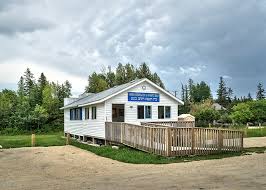
By BERNIE BELLAN (July 13) In 1950 a group of cottage owners at Winnipeg Beach took it upon themselves to relocate a one-room schoolhouse that was in the Beausejour area to Winnipeg Beach where it became the beach synagogue at the corner of Hazel and Grove.
There it stayed until 1998 when it was moved to its current location at Camp Massad.
On August 2nd members of the synagogue will be holding a 75th anniversary celebration.
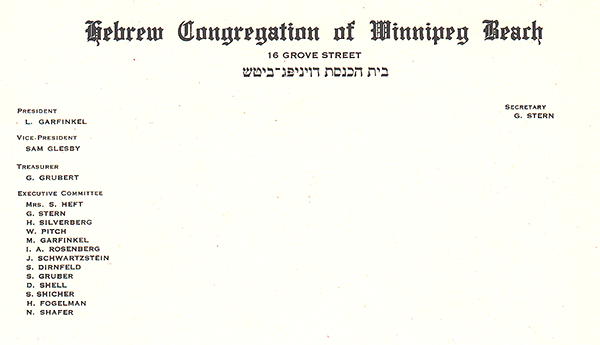
As part of the celebration anyone who is a descendant or relative of any of the original members of the first executive committee (as seen in the photo here) is invited to attend the synagogue that morning.
If you are a relative please contact Abe Borzykowski at wpgbeachshule@shaw.ca or aborzykowski@shaw.ca to let Abe know you might be attending or for more information about the 75th anniversary celebration.
We will soon be publishing a story about the history of the beach synagogue, which is something I’ve been writing about for over 25 years.
Local News
Vickar Family cuts ribbon on new Tova Vickar and Family Childcare Centre
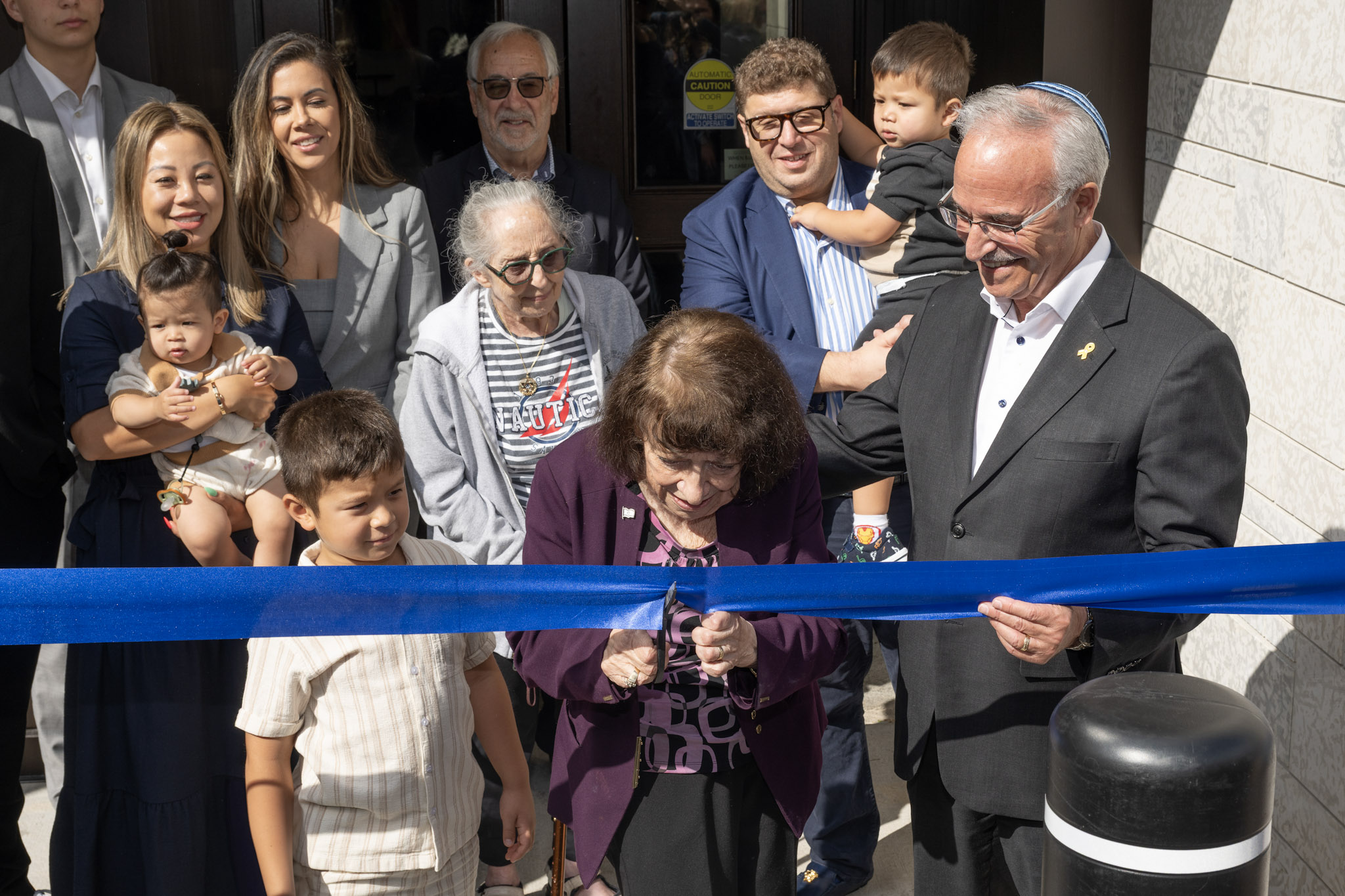
By MYRON LOVE In the words of Larry Vickar, the Shaarey Zedek’s successful Dor V’ Dor Campaign “is not only a renewal of the synagogue but truly a renewal movement of Jewish life in our community.”An integral part of that renewal movement was the creation of a daycare centre within the expanded synagogue. On Monday, June 23, Larry and Tova Vickar cut the ribbon, thereby officially opening the Tova Vickar and Family Childcare Centre in the presence of 100 of their family members, friends and other supporters of the project.
The short program preceding the morning ribbon-cutting began with a continental breakfast followed by a welcome by both Fanny Levy, Shaarey Zedek’s Board President, and Executive Director Dr. Rena Secter Elbaze. In Elbaze’s remarks, she noted that Larry and Tova wanted their family (including son Stephen and family, who flew in from Florida) and friends at the event to celebrate the opening of the Tova Vickar and Family Childcare Centre, “not because of the accolades, but because, as Larry put it, he hopes that their investment in the congregation will inspire others to do the same.”
“When Larry and I spoke about what this gift meant to him and the message he wanted people to take away,” she continued, “I couldn’t help but connect it to the teachings of Reb Zalman Schachter-Shalomi whose book – Age-ing to Sage-ing – changes the whole way we look at the concept of ageing and basing it on our ancestral teachings.”
She explained that his concept of “Sage-ing” is based on three key ideas – Discover your meaning and purpose; accept our mortality and think about the legacy you want to leave.
“Larry spoke about these exact concepts when we met,” she said.
Elbaze also noted the presence of Shaarey Zedek’s newly-arrived senior Rabbi Carnie Rose, former Rabbi Alan Green, and area MLAs Mike Moroz and Carla Compton.
Larry Vickar expressed his great appreciation for all those in attendance. “Tova and I are deeply moved to stand here with you today for this important milestone in our community”, he said. “We are grateful to be surrounded by all of you, the people we care about, our family and friends… you who have touched our lives and played some part in our journey.”
Local News
New Israeli restaurant opens in River Heights

By BERNIE BELLAN (July 6, 2025) It’s been a long time since our community has been able to welcome the opening of a restaurant that specializes in Israeli food.
That void is now filled with the opening of The Green Falafel, at 1833 Grant (corner of Centennial – next to the Subway), which opened its doors (to huge crowds) on Monday, July 7.
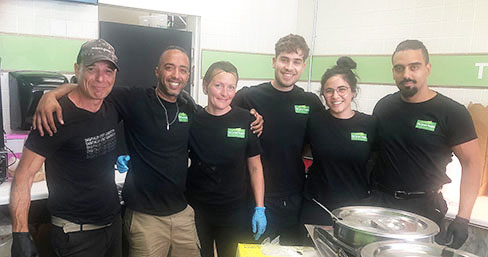
(owners Ariel & Elena Maudi second and third from left)
The restaurant is the fulfillment of a dream long held by the husband and wife team of Ariel and Eden Maudi, who have been living in Winnipeg the past 11 years.
Ariel, who was born in Israel and grew up in Beer Sheva, says that he worked in telecommunications in Ramat Gan for several years. He adds though that he had always dreamed of owning his own falafel stand in Israel, but life was difficult there and he decided to come to Canada as a tourist to see whether there were any opportunities here for him, Eden and their two young children.
Eden, who was born in Russia and moved to Israel with her family in 1996, stayed behind with the two kids, who were both pre-schoolers, while Ariel tested the waters in Canada first.
Ariel says he came to Canada as a tourist in 2013. His first stop was in Toronto, where he acquired his 1st class driver’s license. At the end of 2013 he moved to Winnipeg where he began working as a truck driver. Soon he found himself employed as a successful sales person at Vickar Nissan where, he says, he once achieved the status as the top car sales person in Canada. After working at Vickar Nissan for a number of years, Ariel began working as an installer for Bell MTS.
Meanwhile, Eden began working at a Walmart, later at the Costco on Regent.

But, when the opportunity to move into a space that had been previously occupied by another restaurant, but which had closed, became available, Ariel and Eden decided to open their own Israeli restaurant in an area that hadn’t seen Israeli food served since the controversial closure of Bermax Café in 2019.
The Maudis say that they will be serving a variety of Israeli dishes – all vegetarian, and that they will be fully kosher.
The “green” in Green Falafel, by the way, Ariel Maudi explains, comes from the cilantro and parsley that are added to the chickpeas. In addition, their pitas will be coming from Israel and will be baked fresh daily.
The Green Falafel is open from 10-8 Sunday – Thursday and 10-4 on Friday. (Closed Saturday).Delivery will be available through Uber Eats and DoorDash.
Call 204-557-7837 for information.
